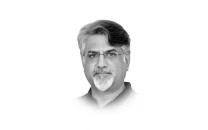What the 26th and 27th Amendments seek to change
Amendments mark more than procedural reform; they signal a structural shift in judicial power

The Constitution of Pakistan rests upon a delicate balance between its three organs: the Legislature, the Executive and the Judiciary. This balance is not ornamental. It is the very mechanism through which fundamental rights are protected, state power is limited, and democratic continuity is maintained. It is within this context that the introduction of the 26th and 27th Constitutional Amendments must be examined, for their combined effect represents not procedural refinement but a structural shift in the character of the State.
The 26th Amendment fundamentally changed the manner of appointment, confirmation and tenure of judges of the High Courts and the Supreme Court. The amendment's primary impact fell on the architecture designed under Article 175A, which had created the Judicial Commission of Pakistan (JCP) and the Parliamentary Committee. Under the earlier model, the Chief Justice of Pakistan and senior members of the judiciary retained a decisive role in recommending judicial appointments, thereby safeguarding judicial independence, a constitutional cornerstone.
However, the 26th Amendment subtly but effectively altered this balance. By modifying Articles 175A, 177 and 193, the primacy in judicial appointments shifted in favour of the Executive. The role of the judiciary, while not eliminated, was diluted. In constitutional terms, this was not merely a legal adjustment — it represented a realignment of institutional authority. The Executive, through a strengthened influence over judicial appointments and tenure, gained a leverage historically viewed as inconsistent with an independent judiciary.
But the story did not end there. Having achieved enhanced control within the existing judicial structure, the Federal Government introduced the 27th Amendment Bill, which went further and deeper. Citing the Charter of Democracy (2006) to justify reform, the proposal sought to bifurcate the superior judiciary into two distinct institutions:
The Supreme Court of Pakistan
The newly established Federal Constitutional Court (FCC).
Under this proposed framework, the FCC was to be entrusted with the exclusive authority to interpret the Constitution, hear constitutional petitions and adjudicate federal-provincial disputes — jurisdiction presently exercised under Articles 184(3) and 186 by the Supreme Court. The implication was clear: the Supreme Court would no longer be the final constitutional arbiter. The role of "guardian of the Constitution" would shift to a new judicial body whose leadership appointments were designed to fall under Executive influence.
The most consequential provision was that the President would appoint the Chief Justice of the Federal Constitutional Court on the advice of the Prime Minister. Under Article 48, the President is bound to act on such advice, meaning that the effective authority to appoint the Chief Justice of the FCC would rest with the Executive. Similarly, the appointment of the Chief Justice of the Supreme Court, along with posting and transfer of judges, would be subject to a reconstituted Judicial Commission redesigned to enhance government influence.
The cumulative effect is unmistakable: These changes do not merely reorganise judicial procedures. They redefine the position of the judiciary within the state structure. And it is here that the Basic Structure Doctrine, most prominently articulated by the Indian Supreme Court, becomes relevant. In Kesavananda Bharati v State of Kerala (1973), the Indian Supreme Court held that while the constitution may be amended, its basic structure may not be altered. The Court identified judicial independence, separation of powers, judicial review and constitutional supremacy as features forming part of this basic structure.
Subsequent judgments reinforced this principle:
In Indira Nehru Gandhi v Raj Narain (1975), the Court held that free and independent judiciary is necessary for rule of law. In Minerva Mills v Union of India (1980), the Court ruled that the balance of power among organs of state cannot be disturbed by amendment. Most recently, in the NJAC Case (2015), the Indian Supreme Court struck down an amendment that shifted judicial appointments toward the Executive, declaring it an assault on judicial independence.
While Pakistan's judicial landscape is not identical, the constitutional principles at stake are parallel. Our Constitution also rests on: Supremacy of the Constitution; Separation of powers; Judicial review; and Judicial independence.
By transferring decisive appointment authority to the Executive and by removing the Supreme Court from its role as the final interpreter of the Constitution, the 26th and 27th Amendments alter the basic framework itself. This raises a critical question: Can Parliament amend the Constitution in a manner that changes its foundational design? In constitutional democracies, amendments are permitted, but alterations that replace the structural identity of the Constitution are not. Otherwise, an amendment ceases to be an amendment — it becomes a new constitution in the guise of revision.
Pakistan stands at a constitutional crossroads. The proposed reforms risk centralising power in the hands of the Executive, weakening the judiciary, and unsettling the carefully crafted equilibrium that prevents the rise of unrestrained state authority.
Reform is not inherently objectionable. But reform that reshapes the Constitution's soul invites consequences far beyond administrative convenience. The question is not whether institutions should evolve, but whether such evolution should come at the cost of the principles that safeguard liberty, rights and democratic accountability. For in the end, the Constitution is not merely a legal document; it is the architecture of the Republic itself.














COMMENTS (1)
Comments are moderated and generally will be posted if they are on-topic and not abusive.
For more information, please see our Comments FAQ